How do Atoms make Colours?
Mirrors, Magnets and Meteorites make an appearance in this week's Naked Scientists Question and Answer Show. We find out how the immune system could be convinced to fight skin cancer, how future MRI scans could be in colour, and why easy-clean computer keyboards could help keep MRSA out of hospitals. We answer your questions about inhaling helium, wind turbines, bacteria and the molecular basis of mirrors. Plus, in Kitchen Science Dave sets us the Balloon Kebab Challenge!
In this episode
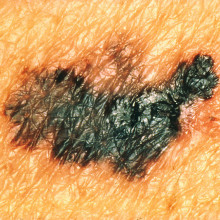
Melanoma skinned alive
US doctors have successfully beaten a man's melanoma (skin cancer) into remission using only his own immune cells.
 Cassian Yee and his colleagues at the Fred Hutchinson Cancer Research Centre in Seattle collected CD4 T lymphocytes, a form of white blood cell, from a 52 year old man who had developed malignant melanoma that was already spreading around his body. The team used growth factors to encourage the cells to divide, and then selected out just those cells that recognised a chemical marker, known as an antigen, called NY-ESO-1, which is present on the surfaces of some melanoma cancer cells. About five billion of these tumour-targeting T cells were then re-infused into the patient who, over the next 3 days, developed a mild fever and some aches and pains but otherwise showed no ill effects.
Cassian Yee and his colleagues at the Fred Hutchinson Cancer Research Centre in Seattle collected CD4 T lymphocytes, a form of white blood cell, from a 52 year old man who had developed malignant melanoma that was already spreading around his body. The team used growth factors to encourage the cells to divide, and then selected out just those cells that recognised a chemical marker, known as an antigen, called NY-ESO-1, which is present on the surfaces of some melanoma cancer cells. About five billion of these tumour-targeting T cells were then re-infused into the patient who, over the next 3 days, developed a mild fever and some aches and pains but otherwise showed no ill effects.
But two months after the infusion he underwent a repeat CT scan, which showed complete resolution of his melanoma, including the secondary spread that had been present in his lungs and lymph nodes. Even two years later he remains healthy and disease free.
Intriguingly, tests on the patient's melanoma showed that only about 50-75% of the tumour cells carried the NY-ESO-1 marked targeted by the T cells the team injected, which begs the question as to why the therapy was so effective if only half of the cells were potentially susceptible. The team think the answer is that the infused cells also helped to stimulate the immune system to recognise other antigens on the melanoma cells, including markers called melanoma antigen-3 (MAGE-3) and melanoma antigen recognised by T cells (MART-1), because cells targeting these markers appeared in the patient's blood following the therapy.
The research, published this week in the New England Journal of Medicine, marks the first time a patient has ever been put into long term cancer remission using just his own cells. However, the team are taking a cautious stance and emphasise that more tests are needed.
"We were surprised by the anti-tumour effect of these CD4 T cells and its duration of response," says Lee. "For this patient we were successful, but we would need to confirm the effectiveness of the therapy in a larger study."
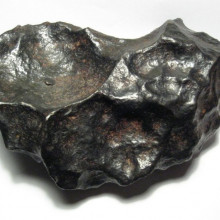
Building blocks for life found in meteorite
How life began on earth is one of the biggest questions for science, one theory that has been around for 50-60 years is that space has given us a helping hand, some scientists such as Fred Hoyle going as far as to say that life got to earth from space.
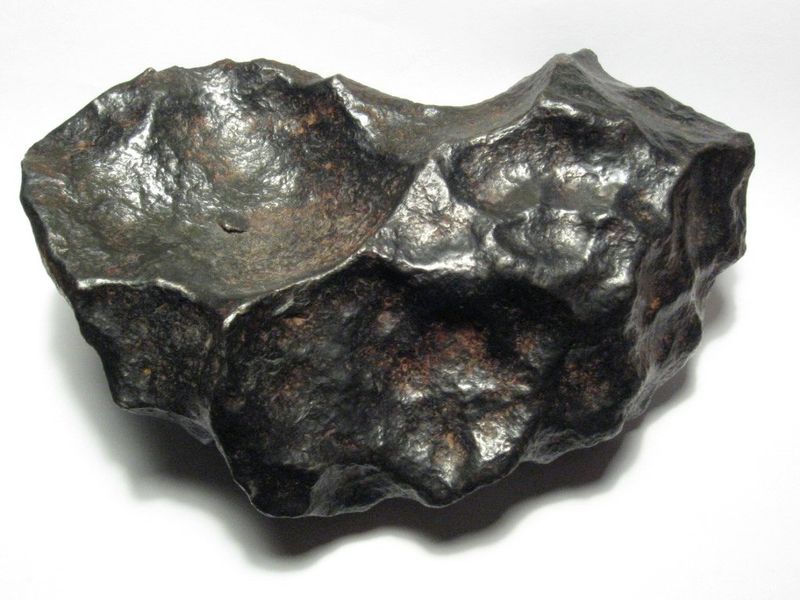 Both DNA and RNA which are the basis of the replication of living things are made up of organic molecules called nucleobases and proteins are made up of others called amino acids. When scientists have analysed some types of ancient meteorites called carbonaceous chondorites they have for many years found small quantities of both nucleobases and amino acids, but the problem is contamination. The earth is full of nucleobases and amino acids, and the meteorites have hit the ground, so it could be contamination, but Zita Martins from Imperial College has now prooved they have an extra terrestial origin. He has looked at the kinds of carbon in the meteorite. On earth most carbon is the light form carbon-12, and the slightly heavier carbon-13 only makes up about 1% of the carbon you will find, but when Zita looked at the carbon in the nucleobases from a meteorite that fell in 1969 near Murchison in Australia it was 44% carbon-13 ruling out a terrestrial origin.
Both DNA and RNA which are the basis of the replication of living things are made up of organic molecules called nucleobases and proteins are made up of others called amino acids. When scientists have analysed some types of ancient meteorites called carbonaceous chondorites they have for many years found small quantities of both nucleobases and amino acids, but the problem is contamination. The earth is full of nucleobases and amino acids, and the meteorites have hit the ground, so it could be contamination, but Zita Martins from Imperial College has now prooved they have an extra terrestial origin. He has looked at the kinds of carbon in the meteorite. On earth most carbon is the light form carbon-12, and the slightly heavier carbon-13 only makes up about 1% of the carbon you will find, but when Zita looked at the carbon in the nucleobases from a meteorite that fell in 1969 near Murchison in Australia it was 44% carbon-13 ruling out a terrestrial origin.
Whilst this doesn't indicate that life came from space, it does show that when the earth was yong and it was bombarded by huge numbers of meteorites the first living things could have been made from chemicals from space.
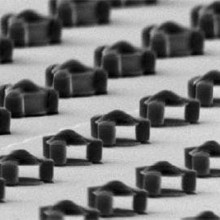
Superior scans: technicolour comes to MRI
Scientists have developed a way to introduce colour into body scans, potentially ushering in a powerful new method to detect disease.
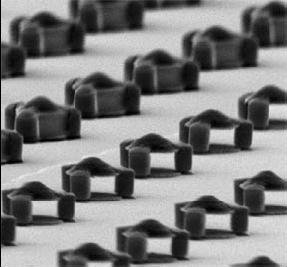 Writing in this week's Nature, Maryland-based NIH researcher Gary Zabow and his colleagues describe how they have developed a family of tiny tracer particles that emit radio signals at different frequencies that MRI (magnetic resonance imaging) scanners can see. The scanners then translate these different frequencies into colours on the images that are shown to the operators.
Writing in this week's Nature, Maryland-based NIH researcher Gary Zabow and his colleagues describe how they have developed a family of tiny tracer particles that emit radio signals at different frequencies that MRI (magnetic resonance imaging) scanners can see. The scanners then translate these different frequencies into colours on the images that are shown to the operators.
The particles, which range from one-thousandth to one hundredth of a millimetre, resemble nanoscale dumbells consisting of two gold-coated nickel discs joined by a cross member which spans a cavity between them. The nickel particles line up with the scanner's magnetic field, but also produce their own magnetic field running in the opposite direction. As a result, water molecules sitting in the cavities between the nickel discs can be selectively excited by pulses of radio waves at certain frequencies. The particles then produce their own radio waves, which the scanner can pick up and build into a colour image.
The researchers also suggest that the particles could be "functionalised" so that they aggregate preferentially in certain tissues, or remain stable only in certain conditions which means that body scans of the future won't just be shades of grey but technicolour and far more informative!

Greenland ice gives us the best view of the climate so far
The climate is a complicated system which can take a long time to react to new inputs and we are all dependent on its vagueries so we can't really do experiments on it in order to understand how it works, and to fine tune our models of how it will behave in the future.
 This means the only way we can study its behaviour is to look into what was going on in the past. The North Greenland Ice core Project is giving us our best resolution view of the climate for the last 15 years so far. This has involved drilling an ice core in northern Greenland and then putting the core into an automated machine at the drilling site. This machine then slowly melts the ice a few months worth at a time, and measures the composition of this ice.
This means the only way we can study its behaviour is to look into what was going on in the past. The North Greenland Ice core Project is giving us our best resolution view of the climate for the last 15 years so far. This has involved drilling an ice core in northern Greenland and then putting the core into an automated machine at the drilling site. This machine then slowly melts the ice a few months worth at a time, and measures the composition of this ice.
This is useful because water containing oxygen-18 will freeze before the lighter oxygen-16 so the warmer the ice crystals in snow form the more oxygen-18 there will be, and water containing hydrogen-2, deuterium, will evaporate at a higher temperature than hydrogen 1 so the more deuterium in the ice the hotter the water that it evaporated from was.
Previous ice cores had shown that the temperature in Greenland increased by 10C in 50 years, this new data not only confirms this but shows that the ice cover on the Atlantic probably retreated from Portugal to Iceland in just 1-3 years. Also a few years before this melting the amount of very fine dust from Chinese deserts suddenly dropped indicating that the deserts suddenly became wetter.
This shows just how interconnected the world's climate can be and how frighteningly rapidly it can change!
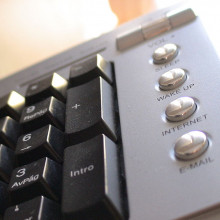
12:06 - Cleaner Keyboards Prevent MRSA
Cleaner Keyboards Prevent MRSA
with Dr Peter Wilson, University College London Hospital
Do you ever eat at your desk at work? It may worry you that your computer keyboard is a hotbed of bacteria, but even more worrying is the fact that keyboards in hospital wards also house bacteria. Speaking with Chris Smith, Dr Peter Wilson is from University College London Hospital, and he's taken steps to ensure that the keyboards in his hospital will be much cleaner...
Chris - So, why are computer keyboards a threat in hospitals? What's the evidence that they are?
Peter - We've known for a while that all sorts of bugs can grow on computer keyboards. We did a study and others have done a study where we find up to 25% of them have superbugs like MRSA. They got there because a nurse will do observations on the patient and then go and put the observations in to the computer. She won't wash her hands between touching the computer and touching the patient. A doctor will then come along, touch the keyboard - not necessarily touching the patient so he won't wash his hands either. Then he'll go on to the next keyboard. Any bugs that have been brought from patient to keyboard will then go the next keyboard and then to the next patient. In fact, we could see when we did our study that certain strains of MRSA were, in effect, going around the ward.
Chris - What proportion of keyboards were infected with bugs?
Peter - Well, up to 25% have MRSA. It's not just that. There's 3 or 4 other superbugs which small numbers of these organisms sit on the keyboards. The problem is nobody ever cleans the keyboard. Or if they do it's very rare.
Chris - What proportion of keyboards do actually get cleaned?
Peter - Well, when we audited it we found only 6% got cleaned. These are ones that already had plastic covers on them to try and make it easier to clean. If you have an ordinary keyboard, as you'll know yourself it's very difficult to get between the keys and clean yourself and get all the debris out from in between. It's a real problem.
Chris - What have you done to overcome the problem?
Peter - We knew we were going to have electronic patient records so it was supposed to be a paperless hospital. We were moving into a new hospital in 2005 in Euston Road. What we did was we had a look at what was on the market. There were a few washable keyboards around but they required you to wash them under a tap and blow dry with a hairdryer. Nobody was going to do that. We then went to four companies, gave them a very detailed specification of what we wanted and an American one came back with one that was pretty close.
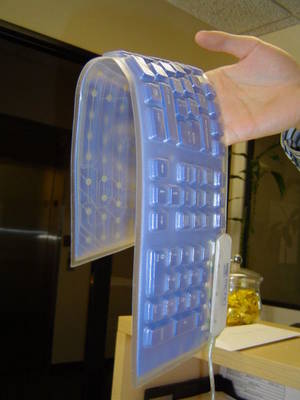 What it is, really is the keyboard is completely flat. It's absolutely flat. There's an optical illusion printed on it which makes it look as if it's got ordinary keys. The reason it's flat is that you can take an alcohol wipe or a detergent wipe, just go across it once in literally about 4 seconds and completely clean it and sterilise it. In addition to that what we put in was an alarm so that if you haven't cleaned it for 12 hours it starts flashing irritatingly at you. You can only turn the flashing light off if you take an alcohol wipe and go across the whole surface.
What it is, really is the keyboard is completely flat. It's absolutely flat. There's an optical illusion printed on it which makes it look as if it's got ordinary keys. The reason it's flat is that you can take an alcohol wipe or a detergent wipe, just go across it once in literally about 4 seconds and completely clean it and sterilise it. In addition to that what we put in was an alarm so that if you haven't cleaned it for 12 hours it starts flashing irritatingly at you. You can only turn the flashing light off if you take an alcohol wipe and go across the whole surface.
Chris - But in some places where computers are getting very heavy use then 12 hours might still be too infrequent, wouldn't it?
Peter - Oh yes, and you can reduce the interval to 3 hours. We have it set at three hours in our intensive care unit. If you do that you reduce the bug counts on the surface of these keyboards by 70% compared to ordinary keyboards.
Chris - Extrapolating that, what sort of impact do you see that having in terms of hospital-acquired infections?
Peter - That's very difficult to say. We know that most hospital acquired infections are spread on people's hands. We know that a lot of it is direct from patient-to-patient. Probably around about a third is from patient -to-somewhere in the local environment then picked up by somebody else, back to a patient. It might have an effect on about a third of the transmission of hospital infection. Very difficult to prove, though. As you make an investment in these keyboards and they last for four years it would only have to have a four or five percent effect on the overall level of infection to pay for itself.
What’s happening at a molecular level when a mirror is reflecting light?
One way of looking at it is that most mirrors are made out of something that conducts like a metal. When the light, called an electromagnetic wave, that means that it had an electric field which is oscillating and vibrating. When this light hits the metal - because it's an electric field it means the electrons which are free to move inside a metal will start to vibrate backwards and forwards. If electrons are moving backwards and forwards this means an electron moving backwards and forwards will create a vibrating magnetic field. That's how you create light in the first place. You create another electromagnetic wave. The way in which they're moving by the light hitting the metal will cause light to be emitted in the opposite direction. It will reflect off in the way you'd expect light to reflect off a mirror. Light comes in, causes electrons to move which then re-radiate the light out again as the reflected light comes off again.
Why would it take so long for light to leave the Sun?
Yes. There's a reason for saying that. The reason is that Brian Fulton, who's Professor of Astrophysics at York told me that. So I know it's right! The reason is that the sun is so dense because it's such a huge body with so much pressure in the middle that the photon effectively behaves like a gigantic game of pinball. The photon gets banded around all over the place and finds it very difficult to escape. If you extrapolate back to the reaction, the fusion reaction: four hydrogen atoms fusing together to make one helium and some energy. The energy that came was probably made at least a million years ago to make that photon. It's just taken that long to filter its way to the surface. If you took it to its logical conclusion if the sun suddenly stopped all its activity now you'd still probably have a million years of light locked away inside.

Where do the roots on baby teeth go?
Baby teeth definitely do have roots and I have a painful personal experience to recount on this front. When I was about 14 my dentist decided that I had too many of my milk teeth left and decided they needed pulling out. He pulled them out and it was terrifically painful because they all had very long roots. The ones that had fallen out didn't have any roots.
The reason is that when you have secondary dentition, or adult teeth, they come up underneath where your baby teeth are and they erode the root away so this loosens the tooth and makes it fall out. Only once there's a secondary tooth to come in its place because - evolutionarily speaking, it wouldn't do to have a period with no teeth: if all your teeth just fell out then you'd have nothing to replace them with - you might starve, if you were back in ancient history and didn't have the welfare start to look after you with pot noodles.
That's why you have this dissolving of the root in order that the tooth can be replaced by secondary dentition.
What he's seeing is nature in action!
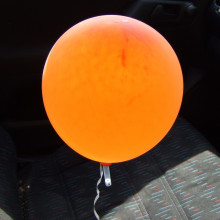
Is there a gas that can do the opposite of helium to the voice?
Yes indeed. Helium does strange things to your voice because it is much less dense than air.
In your throat it is acting a bit like a musical instrument. You get sound waves vibrating backwards and forwards, up and down above your vocal cords. That gives rich timbre to your voice.
It picks which frequencies of your voice to amplify.
Helium is a much lower density gas than air, and that means that sound travels much faster in it.
Then your throat will vibrate at much higher frequencies. It will amplify the sounds at much higher frequencies.
To reverse the helium effect you'll need a much denser gas than air.
There are a couple of good ones. Xenon would work beautifully, which is a noble gas, very safe. Another good one to try is sulphur hexafluoride. Both of these are much denser than air so you'll amplify the much deeper sounds in your voice.
How do bacteria know where they are in your body?
It's all because bacteria have what's called a tropism. They are set up or they are specialised in order to survive in certain environments. They might have, for instance, molecular grappling hooks which are called pili. These are the bacterial equivalent of VelcroÃ?,®. It allows them to stick on to certain tissues. Different tissues in our bodies have different chemical environments. If you look at say, your bladder and the urethra people get urine infections because specialised forms of E. coli called uropathic E. coli can stick onto the wall of the bladder and also onto the urethra. Then your body tries to prevent them from doing that by having this sort of anatomical TeflonÃ?,® in the form of very slippery cells. The E. coli have very strong VelcroÃ?,® which enables them to stick.
Other bacteria would just be washed away. In the blood stream there are some bacteria that could cling onto the heart valves. They can do that because they've developed an ability to recognise the surface of the heart valve, stick on and then secrete this thing which is called a biofilm: a protective layer which stops the immune system getting at it. It's not so much that they know where to go. It's more that by chance they find themselves in the right place and they have the ability to stick on and make a home there. Different bacteria thrive in different environments because they're specialised to exist in those particular places.
Why do wind turbines only have three blades?
Not all wind turbines do have three blades. I've seen some in Spain which have four and some older ones only have two. Some old-fashioned windmills have up to six or eight. Three seems to be the optimum for wind turbines. There's a few reasons behind that. One of them is that if you have too many blades on a wind turbine each blade as it moves through the air leaves a vortex behind it. It's very like if you look at a plane taking off you can see swirling air behind to two wigs of the plane. Wind turbine blades are very much like a plane's wing. You get a swirl left behind a moving blade. If those interfere with one another that can cause big problems. That's similar to a boat propeller only having three blades. If you had more blades you'd think you'd move more water but actually it would become self-demolishing in terms of the benefit. That's the optimum choice between weight and materials and efficiency.If you have only two blades because the wind's moving faster higher up than lower down then it tends to, if the blade's pointing upwards, it puts a big twisting force on the bearings. It can damage the bearings with the horizontal force.You can actually steer a boat that way. With big boat propellers, really big propellers the water is denser at the bottom of the propeller than it is at the top. The propeller as it turns round is creating more of a push to the side at the bottom of its run than at the top. If you know which way your propeller rotates by giving the engine a big burst of power you can enable it to do what's called prop walking. It gives you an extra kick in one direction which can make it really easy. That's how these really clever people get their boats into really small spaces just because they've learned they can use that trick just to get some extra movement in one particular direction.
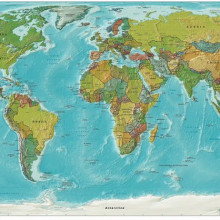
29:00 - Technology Update - Hyper-Local News
Technology Update - Hyper-Local News
with Chris Vallance
Meera - In this modern age of GPS and route finders many of us no-longer feel the need to own or even look at a map. There's more to a map than meets the eye. We could be missing out on an important skill. I'm in London once again with Chris Vallance who's going to tell me all about the wide range of information a map can provide. Hello Chris. 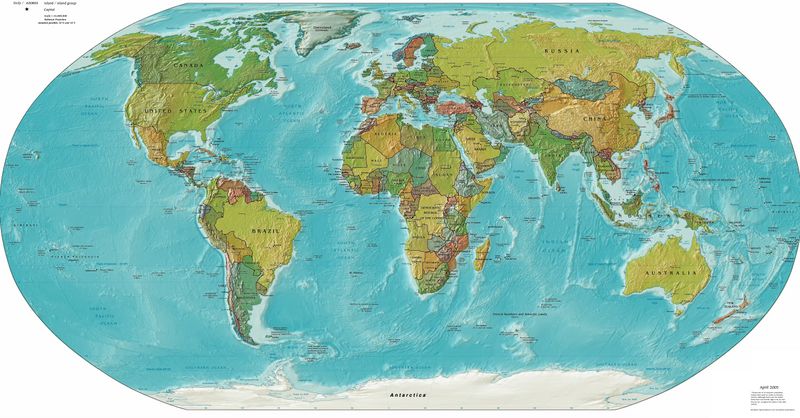 How are you?
How are you?
Chris V - Fine thanks. Bit tired, just back from Chicago Hyper Local News.
Meera - What is that?
Chris V - It's a bit of a renaissance for maps really. Because of the social tools that are available, things like Google Maps, you've got mapping functionality built in for things like services. It's very easy to mix up data and geography.
Meera - How can this relate to news?
Chris V - Within news there's this movement for hyper local news. In other words overlaying information onto maps that you can search down to the post code or block level. I've been meeting with a group of people in Chicago who run every block, it does just that. You get all kinds of information about your neighbourhood on a map. Very granular, very detailed: everything from who's been burglarised, mugged, school performances, local newspaper reports relevant to that specific area.
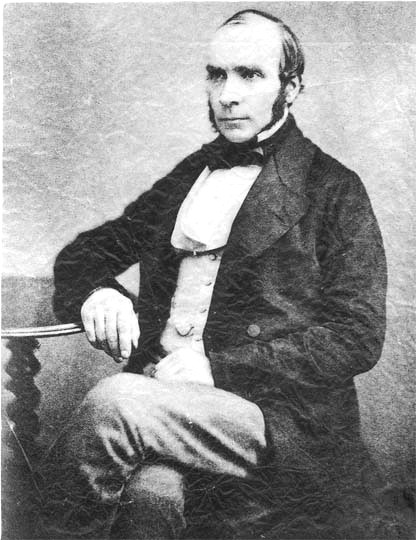 When it comes to mashing up this kind of data with geography we do a kind of flag waving. The early days of using geographic data to present information to make a case one of the pioneers was a British Physician, a chap called John Snow: a very important figure in the history of epidemiology. His work centred around a cholera outbreak in London. In fact there is a monument to him in central London. It's a pump because he was able to trace the source of the outbreak back to a specific pump. Part of the way he presented his case, he made his case that this was the source of the outbreak was using mapping data. John Snow's story was told by somebody in this Hyper Local News group in the most cutting-edge, modern kinds of mapping. It's Stephen Johnson and he's the author of a new book on The Ghost Map.
When it comes to mashing up this kind of data with geography we do a kind of flag waving. The early days of using geographic data to present information to make a case one of the pioneers was a British Physician, a chap called John Snow: a very important figure in the history of epidemiology. His work centred around a cholera outbreak in London. In fact there is a monument to him in central London. It's a pump because he was able to trace the source of the outbreak back to a specific pump. Part of the way he presented his case, he made his case that this was the source of the outbreak was using mapping data. John Snow's story was told by somebody in this Hyper Local News group in the most cutting-edge, modern kinds of mapping. It's Stephen Johnson and he's the author of a new book on The Ghost Map.
Stephen - Of course it's a kind of medical thriller in some ways. The story of terrible outbreaks of cholera in the history of London but crucially there were two people living in the community, John Snow and Henry Whitehead, to try and figure out where the cholera was coming from. Cholera was in the water. It was about a contaminated water supply. Snow and Whitehead together ended up building this map of all the deaths in Soho and London that pointed vividly when you looked at it on a page to this central water pump. What I think is so interesting about this story is Snow and Whitehead were crucially locals. They were in the neighbourhood. It was Whitehead's social network; that he knew so many of his neighbours he was able to contribute so much to the case. One of the things I love about the story is that at the intersection points of all these things is a great study in mapping, information science, epidemiology in cities and how cities and communities can solve problems.
Chris V - If you look at John Snow's original maps they're not so different if you Google them.
Stephen - That's right. The first match-up. He took some publicly-accessible data from the health records showing who lived and died. He added his own data, the data that he and Whitehead had collected, took the street grid that was publically available - just not in digital form - and he layered data on top of that and built something that created a whole new perception of what was happening in his community and ultimately what was happening in communities all around the world.
Chris V - Did the map help to make the case?
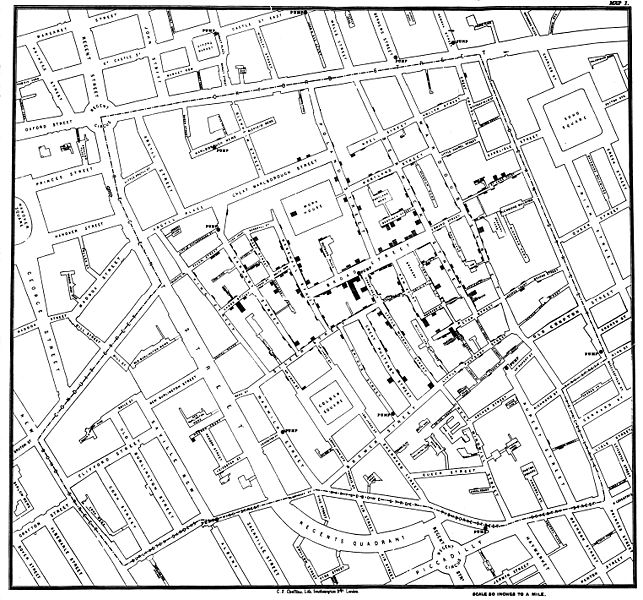 Stephen - Certainly. Some people think the map was how Snow got to the solution itself. That he drew the map and realised that cholera must be in the water because of the pump. In fact it was the other way around. He developed the theory on its own that the water was the problem. He built the map more in a sense of a marketing device for his idea. You can see this in his map in a second.
Stephen - Certainly. Some people think the map was how Snow got to the solution itself. That he drew the map and realised that cholera must be in the water because of the pump. In fact it was the other way around. He developed the theory on its own that the water was the problem. He built the map more in a sense of a marketing device for his idea. You can see this in his map in a second.
Chris V - That's in 1854. We're at least 154 years on from that. What are we doing that is utilising the tools at our disposal?
Stephen - There are two ways to think about it. The first is literally the idea of maps. This is the great renaissance of amateur map makers thanks to the open tools that folks like Yahoo and Google have given us: to create our own vision of the geographic world around us. We could take these maps and say, 'Hey, I've created a map of all the pizza parlours that I love,' or, 'these are comments on local schools...these are crimes that have happened.' The other thing that's not necessarily tied to maps is the flowering of local experts in communities all around the world who are using the connective power of the web to share their ideas about their real world environments. We've been developing this service outside dot n which is only available in the US where we're trying to, in a sense, scrape the web for all the information that we can find that's relevant to places, to neighbourhoods, to schools, to parks, to real estate developments. We've taken all that information and mapped it to geographic points so that you can come down to it and say, 'I'm standing on this street corner at this specific spot, tell me what's happening within 1000ft of me.'
 Meera - That was Stephen Johnson, author of The Ghost map. I guess with all this hyper local mapping is this going to replace the local news paper?
Meera - That was Stephen Johnson, author of The Ghost map. I guess with all this hyper local mapping is this going to replace the local news paper?
Chris V - The thing about a local newspaper is it gives you information on a city-wide, on a region-wide basis. It doesn't necessarily drill down to the individual street or the individual postcode which is what hyper local news does. They will link back to news articles that are based about a specific location, say about a specific school. They're only linking back to the news. They're not really replacing it. They only see it as complementary rather than in competition.
That was Meera Senthilingam talking to Chris Vallance about hyper-local news - which is the newest online development where you can find out the latest news about specific roads or postcodes, and build a modified map to show anything from the nearest schools to the nearest massage parlours!
It's quite remarkable to think that it effectively all stems from the mapping techniques pioneered by the Victorian physician Dr John Snow who made a map to trace the source of a London cholera epidemic.
What effect would a very strong magnet have, placed behind a mirror?
I'm not sure that it would go out of focus but something it will definitely do is affect the polarisation of the light. Polarisation, if you imagine light's a wave: if you imagine a wave on a tightrope - vibrate it up and down that would be vertically polarised. If I vibrate it from side-to-side and it would be horizontally polarised. The light will hit the mirror as an electric current flow (see this question) - what magnets do to an electric current is cause them to bend and move in circles. Because the magnetic field will cause the electrons to bend when the light hits it the reflection will have a slightly twisted polarisation to the one which came in.
Could brain controlled artificial limbs benefit cerebal palsy sufferers?
One of the problems people with cerebral palsy have is very often a sort of 'locked in' syndrome. They have preserved intellect and a very acute brain but the problem is it's translating the messages of what they want to do down to the bits of the body that can make those things happen such as move the limbs or walk around. That's where they have the problem. The device that you're referring to is a piece of work that's been done by Andrew Schwarz. He's in America and what he's done is to produce a system, a computer that can decode the neurological chitchat that goes on in the brain's motor-neurone areas and work out what sort of movement (at this stage a monkey) but a monkey's brain works very similarly to how ours works. He can decode the chit-chat between the cells and get the monkeys to move a robot arm which enables them to feed themselves so very fine and accurate movements just by listening to what the brain's doing. I don't think there's any doubt that it would be possible to use something similar for cerebral palsy. There's every reason to think that it might just work. At the moment, no one's actually doing it in humans although they are doing it in a very limited way they're not actually doing it at the resolution that these people in America are. It's very experimental.

How do atoms make colours?
The biggest effect is actually what colour something absorbs...
Different colours of light have different energies. The bluer the light, and light comes in blobs called photons, the more energy the photon has.
The electrons inside atoms can only have certain energies so they have what are called energy levels. Maybe they can absorb a certain amount of energy or twice that amount or two and a half times that amount, changing in discrete amounts. They move up and down energy 'shells', between orbitals and energy levels.
A substance can only absorb light if the difference between one energy level and the next is equal to the energy of the photon. It will gain the right amount of energy to absorb that photon of light. This is also is why substances have that characteristic spectral fingerprint, an absorption pattern of certain frequencies of light that they absorb and certain lights that they reflect.
Fluorescence is a related effect. This happens when you get high energy photons, for example ultraviolet light, which hit an atom. The atom will absorb that energy and then instead of releasing it all in one big lump, it releases it in two or three smaller lumps which will be a different colour to the UV, a lower frequency that you can see. So something can absorb ultraviolet light, then emit blue light or green light and it looks like it's glowing.
Another thing a lot of people don't often realise is that most of the different colours in nature are flowers. And these colours are actually created by the same molecule, a molecule called anthocyanine. What the flower does is to make the petal more acidic or alkaline. What this does is to add or remove hydrogen from the molecule and this changes the way the electrons whizz around in the molecule. This, in turn, changes the light wavelengths that they can soak up. The petals may be basically different colours, but it's all down to the same chemical, anthocyanine!
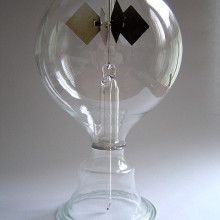
How does a Solar Radiometer work?
It's called a solar radiometer, it turns in a circle and it's amazing to think this thing can turn just by sunlight shining on it. There's no motor in there. It's just literally balanced on this tiny needle point and it spins round in the sun. How does it do it? If you look closely at those vanes, at those panels you'll see that they have a light side and a dark side. One side is soaking up the light, the other is reflecting it. This is the best evidence there really is that light can be a particle and a wave. Light can impact a punch or a kick when it hits something and it can push it along. This is literally the light pushing this thing along. People are talking about building solar sails so you can make a craft, send it up to space, light will bounce off it and you'll get a very tiny push by each photon of light bouncing and pushing it back
An alternative explaination is that the Crooke's radiometer which you've got works in a slightly different way. They've got two sides - one side shiny and one side's black. If the sunlight hits the black side it's going to heat up more than when it hits the shiny side. There's a very low pressure gas inside the radiometer. If the low pressure gas is near the hot side then it's going to get hot and expand and get pushed away and therefore push the radiometer round a bit. If it hits the shiny side it's not going to be nearly as hot. It doesn't get nearly as much kick so the black side gets pushed back and the shiny side gets pushed forward and it spins round.

44:24 - Can lightning re-start your heart?
Can lightning re-start your heart?
Dr Jim Chandler, Consultant Cardiac Anaesthetist at Princess Elizabeth Hospital, Guernsey:
Firstly the short answer is yes, it is possible that being struck twice by lightning would firstly stop your heart and then restart your heart. The answer is a bit more complicated than that though. The heart cells maintain a voltage drop across them which controls the inflow and outflow of ions. These ions allow the heart to beat. If the heart's struck by lightning that voltage drop is immediate and the heart will contract. Unfortunately if the lightning strikes the heart at the wrong part of its relaxation the cells will not contract together, rather chaotically. The heart will enter a rhythm called fibrillation. This doesn't allow it to pump. For that reason the pulse would stop and the heart would be said to be arrested. If a second strike of lightning or an electric shock occurred at the same point when a heart was fibrillating it would be possible that the heart cells would all contract together in a more ordered fashion. However, there is a problem. The heart could also be struck by lightning and instead of going into this fibrillating chaotic rhythm it could go into no rhythm at all. It could quite simply not beat again. That's called asystole. It doesn't end there unfortunately, our poor unfortunate victim also suffers elsewhere. It's likely that the chest would become relatively stiff and the chest muscles would go into spasm. These muscles take a lot longer to recover than heart muscles so it would be very unlikely that your victim would be able to breathe again. For that reason, although the heart may well restart the victim may well die.
How high could a helium balloon go?
Firstly, the reason it floats up in the air is because helium is lighter than air. It's a bit light a boat floating on the water. The balloon is pushing air out of the way that weighs more than the weight of the helium and the balloon together so the heavier air comes in underneath the balloon and the balloon is pushed up in the air. That's why the balloon goes up in the air and this process will carry on going until the helium filled balloon reaches a point or an altitude at which the air is the same density as the helium + balloon effectively is. That is the maximum height which defines how high it can go.As you get higher up the air pressure reduces so the balloon is going to try and expand. Depending on how heavy the balloon is and how quickly it's losing helium (it can get through the gaps in the rubber polymers quite easily) the balloon will keep on going upwards until either it gets heavy enough it can't get any higher or the difference in pressure inside it and outside it is enough that it will explode. I think if you just let go of a helium balloon it will just escape and will go up a few miles. But we couldn't tell you exactly how many. Recently, Michel Fournier was planning to do a parachute jump from the edge of space a couple of weeks ago and unfortunately his balloon took off without him. His balloon would have got him to the edge of space because they use a material that can keep on expanding the farther up it goes, or by starting with the balloon almost entirely empty. There's just a tiny bit of helium in the top of them, so as they go up there's lots of space for that helium to expand into. They go up higher and higher. I think the altitude record for an unmanned balloon is about 53km.
- Previous Lightning Defibrillator
- Next Flying Loops and Fungal Tongues
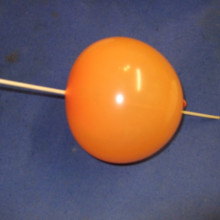
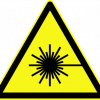
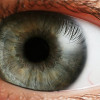
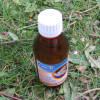
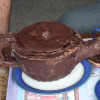
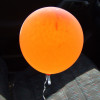
Comments
Add a comment